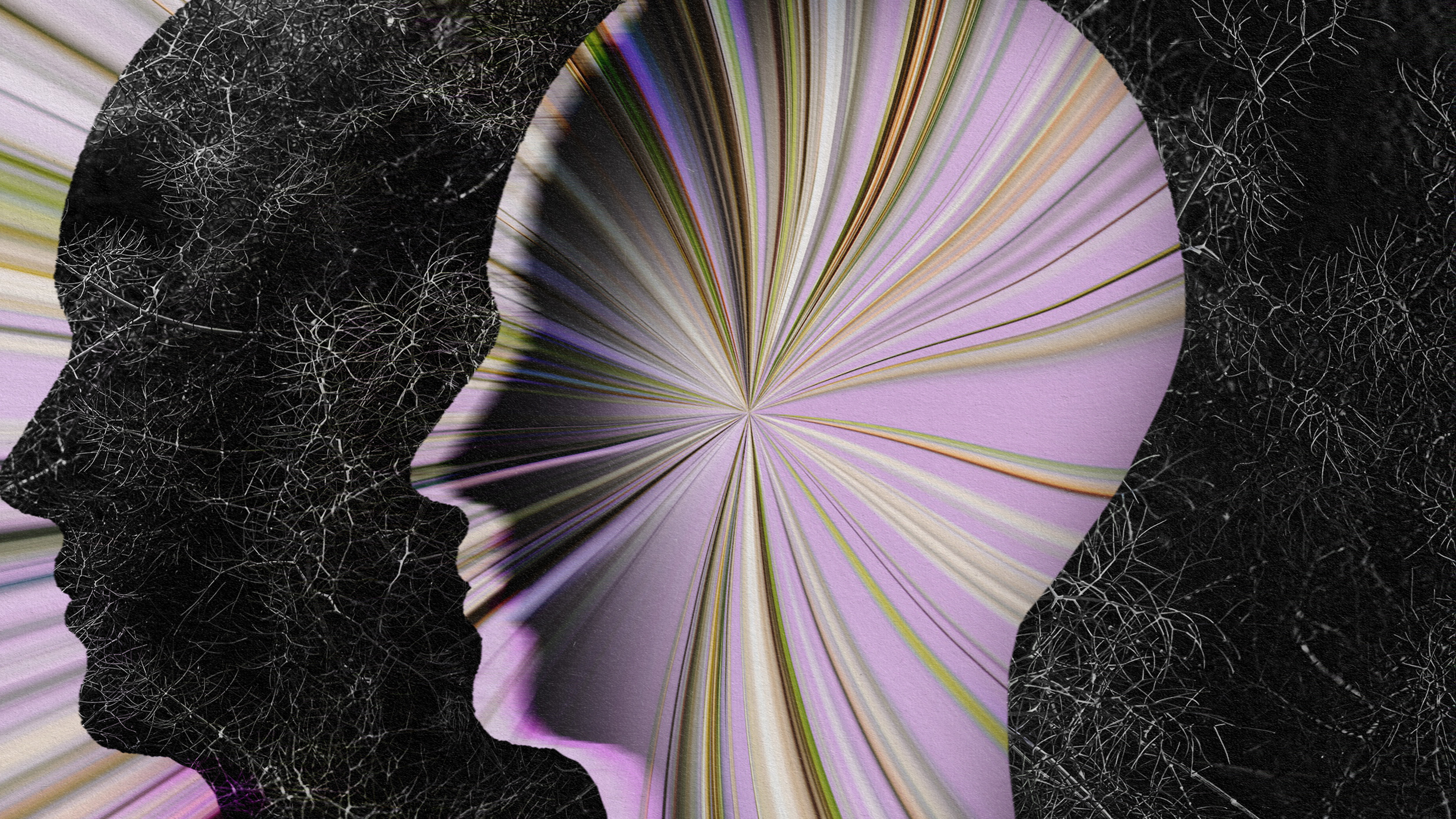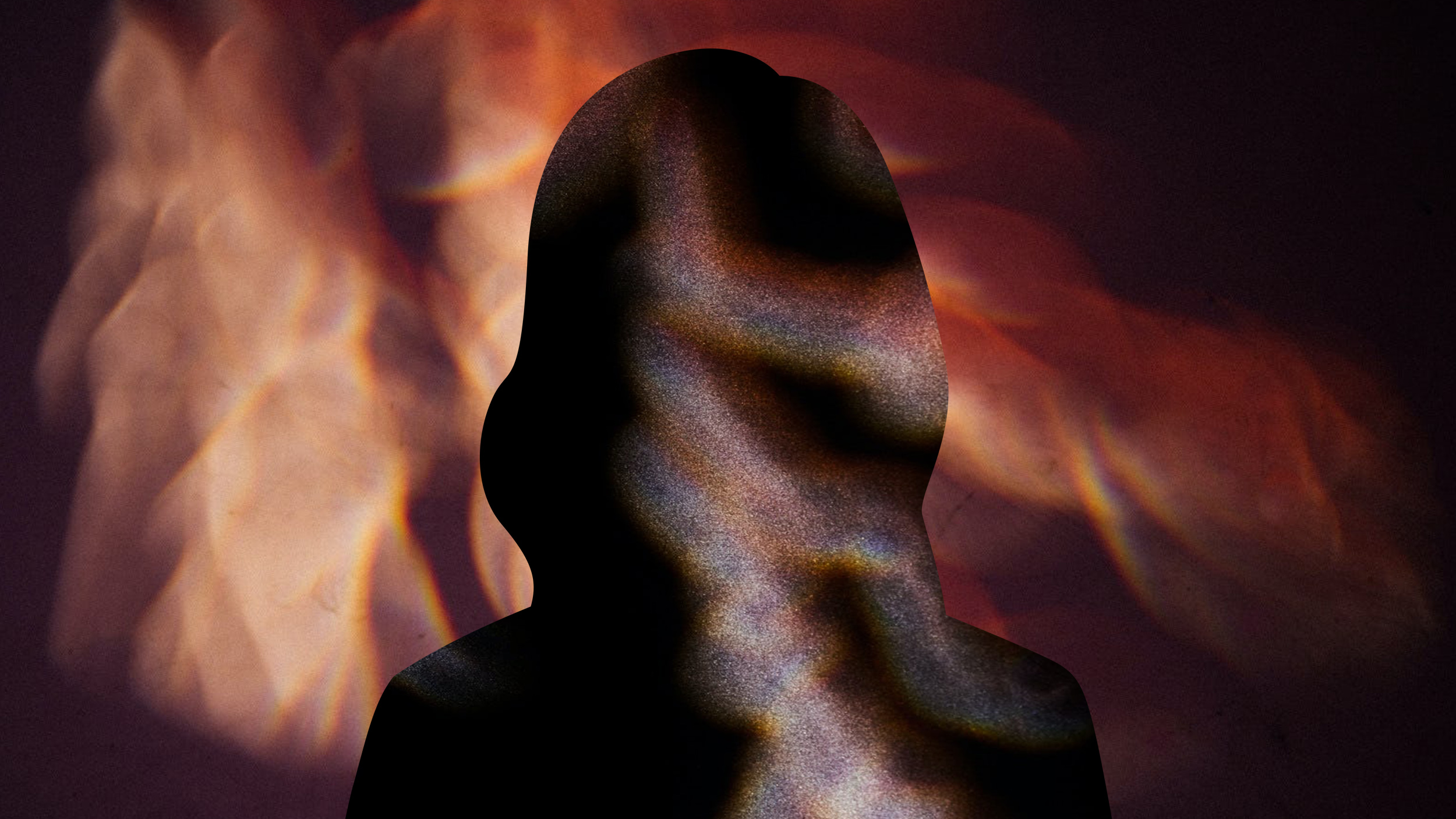Sleep paralysis: a terrifying encounter with our own mind

Credit: MARCO BERTORELLO via Getty Images
- Sleep paralysis, which 20 percent of people experience at least once, can be terrifying.
- Though it is a neurological phenomenon, our culture and beliefs can make the experience worse.
- One potential treatment is to learn to control the content of our dreams.
Imagine waking up in the middle of pitch darkness, only to realize you are completely paralyzed. You suddenly notice out of nowhere, an aggressive and horrendous human-like cat is on your bed. Next, the worst-case scenario unfolds: The creature viciously attacks you, and you vividly feel its razor-sharp teeth penetrating your flesh. Next morning, you wake up with a bruise on your body.
It sounds like something out of a Stephen King horror novel, but the events describe a real-life case of sleep paralysis, as my colleagues and I recently reported in a study conducted in Italy.
Sleep paralysis is a condition in which a person awakens from sleep but is temporarily paralyzed, unable to move or speak. The phenomenon, in fact, is not uncommon. Around 20 percent of people experience sleep paralysis at least once in their life.
Though the episodes of sleep paralysis are brief, lasting a few seconds to minutes, they are rich with mystery and potential insight into the nature of the human brain. How does sleep paralysis happen, and why does it accompany the strangest hallucinations?
Neurological origins of sleep paralysis

Sleep paralysis often occurs when we take a nap during the day, when jet lagged, or in any way, when sleep deprived. It happens when we wake up while still in a stage of sleep, called rapid eye movement sleep (REM), during which most vivid dreams occur. During REM, a part of the front brain called the dorsolateral prefrontal cortex, central to our ability to plan and think logically, turns off. This explains why our dreams during REM seem so real, and why the fabric of reality is so out of control when we dream — with warped landscapes and abruptly changing times, places, and people. (The Hollywood blockbuster Inception brilliantly captures the surreal flavor of dreams.)
I was once able to slide into a lucid dream during my own sleep paralysis. Lucky for me, no terrifying intruders were present.
To prevent us from acting out such intensely “real” dreams during REM and potentially hurting ourselves, our brain has a brilliant solution: it makes our bodies temporarily paralyzed.
REM is also the stage that most resembles wakefulness. Our blood pressure and heartbeat increase, and our breathing quickens. Even brain waves speed up, becoming virtually indistinguishable from wakefulness.
Sometimes, however, we actually do wake up while still in REM sleep. In a sense, we have a “switch” in the brain that tilts us between REM and wakefulness. And all it takes is a few neurochemicals to leave us stuck in this borderline state between parallel “realities” — sleep and wakefulness.
As if being paralyzed and unable to speak when waking up isn’t chilling enough, occasionally, the vivid and sometimes threatening dreaming of REM can “spill over” into conscious awakening. This state — in medical jargon referred to as “sleep paralysis accompanied by hypnopompic hallucinations” — can best be described as a dream, or worse yet, a nightmare coming alive before our eyes.
Becoming a ghost
Sleep paralysis can sometimes cause eerie sensations of floating outside one’s body or looking down upon oneself from the bedroom ceiling. In certain cultures, such out-of-body experiences are attributed to the “soul” — a type of “astral travel” — where the spiritual self projects itself into an alternative realm of existence.
But out-of-body experiences originate in the brain. In fact, they can reliably be produced in the laboratory. We simply have to disrupt the activity of a brain region called the temporoparietal junction. This region helps us build a “body image” in the parietal lobes (the top-middle part of the brain) or a type of neural representation of the self, based on the inputs it receives from the senses. The temporoparietal junction, which is also critical for our ability to distinguish between “self” and “other,” is normally turned off during REM sleep. This is why there is a loosening of the sense of self when we dream: we sometimes see ourselves from a third-person perspective, and other times the self occupies another person’s body.
It is thought that similar disturbances in the temporoparietal junction can occur during sleep paralysis. When we realize we are paralyzed, the motor cortex in the brain immediately sends signals to the rest of the body to move and to overcome the paralysis. It also sends additional signals (sort of like “cc’ing” when emailing) to the parietal lobes. Normally, there is feedback from the limbs telling the brain how to build our body image but not during sleep paralysis.
The confusing signals received by the brain can influence how the brain builds our sense of “self,” and the result is all kinds of bizarre bodily hallucinations, such as out-of-body experiences or seeing one’s limbs or entire body rotate in the air like a tornado or sink deep into the bed as if drowning in quicksand.
Seeing a ghost

Perhaps more distressing than becoming a ghost is seeing one. Sleep paralysis is arguably most infamous for the sinister shadowy “bedroom-intruder” that sometimes attacks the sleeper. The “creature” is usually lurking in the distant dark, slowly approaching in on its victim.
From here, all kinds of ominous things can happen, as far as the imagination can stretch. Commonly, the intruder chokes and suffocates the person by crushing his chest or pressing on his neck. And occasionally, the creature brutally rapes the paralyzed sleeper. The figure often appears simply as a dark shadow, similar to the human size and shape. But, it can also include detailed features, say, a scary demonic face with animal characteristics, like sharp teeth and cat eyes.
This figure goes by different names around the world. My colleague Devon Hinton of Harvard Medical School and I found that in Egypt, the creature is thought to be a Jinn (an “evil genie”) — a spirit-like entity that may hunt down, terrorize, and even kill its victims. In another study, we’ve discovered that among some Italians, it is believed to be a malevolent witch or a terrifying human-like cat, known locally as the Pandafeche. Some space alien abduction cases also fit the sleep paralysis scenario: the person is laying in his bed paralyzed; suddenly the alien appears and begins to experiment on the sleeper’s sexual organs, collecting eggs and semen.
A disturbance in the brain’s body map

UC-San Diego neuroscientist VS Ramachandran and I recently proposed a neurological explanation for why we see this shadowy creature during sleep paralysis.
The idea was sparked by research showing that people who are born with a missing arm may experience phantom limbs, meaning that they feel the presence of missing limbs. This led to the idea that there might be a “hardwired” template, or map, of a person’s body surface in the right parietal lobe of the brain. So when a person born with no arm is experiencing a phantom arm, he is really feeling the presence of the “arm” that is part of his internal body map. This map would be connected to emotional and visual centers in the brain, causing us to be attracted to body shapes similar to our own. In other words, causing us as humans to be innately attracted to other humans, and not to, say, pigs (at least for most of us!).
More clues about such a hardwired body map come from a rare disorder called apotemnophilia, in which a person has a desire to have a limb amputated and is attracted to people with missing limbs.
Ramachandran and I suggested that a disturbance in the processing of “self” and “other” — at the temporoparietal junction — results in a hallucinated projection of one’s own body map; the mind literally casts a shadow, just like the body does. As the barrier between self and other dissolves, the person mistakes his own “shadow” (or body template) for a separate entity.
Compare this to an out-of-body experience: here your sense of self is shifted and you identify with your “ghostly self,” not your “bodily self.” When you see a “ghost,” on the other hand, your vantage point doesn’t get shifted, and you identify with your “bodily self,” instead of your “ghostly self.” And with the “threat detection system” of the brain on high alert (also known as threat hypervigilance), we are even more likely to interpret the human-like shadow as an evil, other entity.
Moreover, our brain regards it as highly improbable that chest pressure, sensations of suffocation, rapid breathing (which are caused by REM physiology), and — on top of everything — seeing a human-like shadow, occur by random chance. When REM dreaming becomes activated as well, the shadowy figure can take on all kinds of sophisticated shapes and dimensions, and the entire plot thickens. At this point, memory and the narrative abilities of other brain regions play a role in the evolving hallucination.
While our neurological explanation for the shadowy figure has yet to be proven, it fits well with previous observations. It has been shown that occasionally when the temporoparietal junction is disrupted using an electric current, instead of having an out-of-body experience, the person senses the presence of a shadowy figure. This figure is perceived to stand behind the person and to mimic his posture; even though the person is aware that the postural features of the shadowy figure are similar to his, he still regards it as a separate person. Based on this, the scientists who conducted the study concluded that they had created a “ghost-like” double.
Fear feeds terrifying sleep paralysis

In the 1986 Stephen King horror Novel It, the clown-like killer exploits the fears of its victims to hunt down its prey — young children who fear monsters. Although fictional, literature is sometimes closer to science than one would think. Our own research suggests that one’s beliefs about sleep paralysis can profoundly shape the experience.
In one study, Devon Hinton and I found that in Denmark, people regard their sleep paralysis as something trivial caused by the brain. In sharp contrast, we found Egyptians often hold very specific cultural and supernatural beliefs about theirs. In another study, we discovered that Egyptians experiencing sleep paralysis not only fear it much more than Danes do — to the extent that many fear dying from it — but they also have longer episodes and on average experience sleep paralysis three times more often.
These findings strongly indicate that for Egyptians, beliefs have radically transformed the experience — a form of mind-body interaction — causing not only psychological fear but also conditioned physiological fear of sleep paralysis. When they go to bed, they fear the “cultural creature” might attack them. Ironically, this will activate fear centers in the brain (such as the amygdala), making them more likely to wake up during REM and have sleep paralysis. And once they have sleep paralysis, they interpret it in light of their cultural beliefs, thinking, “I am being attacked by an evil spirit,” making them even more terrified. Escalating fear and arousal would worsen sleep paralysis by prolonging the episode and resulting in more intense bodily hallucinations, as they are more likely to try to move during the paralysis, causing body image disturbances.
It doesn’t end there. Now, they notice that they are experiencing sleep paralysis more often and that episodes are longer and more horrifying. They become convinced that they are targeted, perhaps even possessed, by a supernatural creature. This, in turn, makes them even more afraid, and the vicious cycle continues to feed on itself.
It is still unclear whether the fear generated by sleep paralysis can be pathological. But in our recent study, we found that experiencers of sleep paralysis in Egypt have greater symptoms of trauma and anxiety compared to those who have never experienced it. Intriguingly, we also found that those who experience hallucinations during their sleep paralysis have more trauma and anxiety symptoms. These findings point to the possibility that sleep paralysis, if accompanied by certain beliefs, might be a traumatizing experience. This is also consistent with the findings of Richard McNally, also at Harvard, that sleep paralysis interpreted as alien abduction can elicit physiological fear comparable to patients with post-traumatic stress disorder.
Control your dreams: a cure for sleep paralysis?

In the 1984 horror movie A Nightmare on Elm Street, the ghost Freddy Krueger ferociously terrorizes and kills young teenagers during their nightmares. But the protagonist Nancy is finally able to make Krueger vanish from her nightmares; she follows the advice of her friend Glen (played by a young Johnny Depp), who insists that if you turn your back on the monster, you “take away its energy and it disappears.”
Indeed, dispelling the fear surrounding sleep paralysis is an important means to help people cope with their experience and, crucially, to prevent escalating fear cycles that can lead to worse and more frequent episodes. One way to do this is to disseminate scientific knowledge about the experience. This often works. People are genuinely relieved to hear that they aren’t “crazy,” that they aren’t the only ones experiencing it, and that the phenomena seem to originate in the brain.
A more radical approach to overcome the fear of sleep paralysis is by “literally” turning your back on the terrifying monster, by sliding into a lucid dream — that is, a dream in which you are aware that you are dreaming. It is not surprising that sleep paralysis can be a gateway to lucid dreaming. Both sleep paralysis and lucid dreaming are consciousness states that lie between REM and wakening; the former is dreaming while awake; the latter, being awake while dreaming.
Neural circuitry associated with wakefulness is more likely to become activated during sleep paralysis, such as the dorsolateral prefrontal cortex that helps us organize our logical thoughts when awake (and which is normally turned off during REM). When the dorsolateral prefrontal cortex becomes active during sleep, we enter a type of hybrid consciousness that combines the surrealness of dreams and the rationality of wakefulness. And so, we become aware that we are dreaming — and like a great Michelangelo we can create our own fantasy worlds composed of colorful landscapes and creatures of all kinds conjured by our minds. Being able to manipulate the content of one’s sleep paralysis hallucinations and REM-dream imagery could give the experiencer a sense of control over the situation and might therefore be therapeutic.
I was once able to slide into a lucid dream during my own sleep paralysis. Lucky for me, no terrifying intruders were present. When I became aware that my dreaming “self” was walking around in my bedroom, it occurred to me to do an “experiment.” I found a piece of scrap paper on the floor and put it in my pocket. I thought to myself, if it’s still there upon awakening, I would have to reconsider some of my own scientific theories about the role of the brain in favor of more uncanny explanations. My pocket was empty when I woke up.
On a different occasion, I wanted to test whether by deliberately trying to move during the paralysis (causing disturbances to my body image) and imagining that a sinister creature was present in my bedroom (activating dream imagery), I could create my own hallucinated “Frankenstein monster.” I wasn’t able to complete the “experiment” out of sheer horror, but I still joke with my colleagues telling them that we’re among a select group of people who can say we’re working while sleeping.
Based on my scientific work on sleep paralysis around the world and our proposed neurological explanation for why people hallucinate ghosts during the episode, I thought to myself, “How do I create a simple, yet effective therapy for sufferers?” Meditation-relaxation (MR) therapy was recently designed as a direct treatment for sleep paralysis. The treatment, which includes techniques of cognitive reappraisals and emotional distancing, meditation, and muscle relaxation, aims to minimize current attacks and decrease the frequency, severity, and duration of future ones. In a recent pilot study, we found that MR therapy reduced sleep paralysis episodes by 50+ percent when applied for eight weeks in patient with narcolepsy.
As we are just beginning to probe this fascinating condition and unlock its neural basis, the mystery remains. Here is a single phenomenon that can make us see and become ghosts, have encounters with space aliens from distant galaxies, and plunge us into far and exotic lands of lucid dreaming, where we are the sculptors of our own realities, all the while laying silently in our beds. It shows us firsthand how the feeling of a sense of self as a unified entity separate from others arises in the brain and how vulnerable this feeling is to disruption.
Dr. Baland S. Jalal is a researcher at Harvard University, Department of Psychology and visiting researcher at Cambridge University, Department of Psychiatry. He obtained his PhD at Cambridge University in the School of Clinical Medicine (Trinity College Cambridge) and was a Fellow at Harvard University (2016, 2018). He is a close collaborator and co-author on 10 papers with the renowned neuroscientist VS Ramachandran (2011 TIME magazine 100 most influential people in the world).





